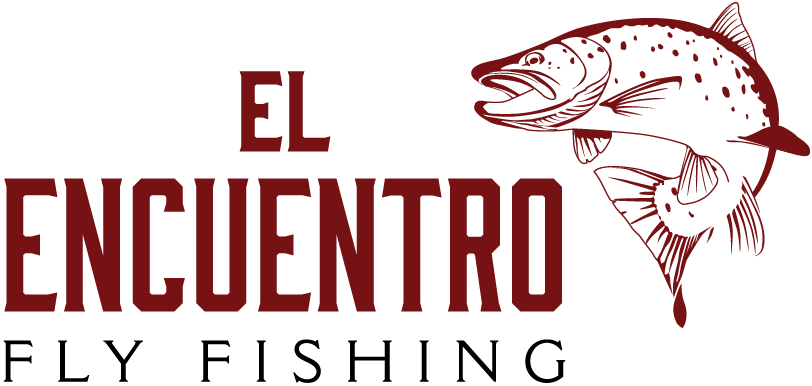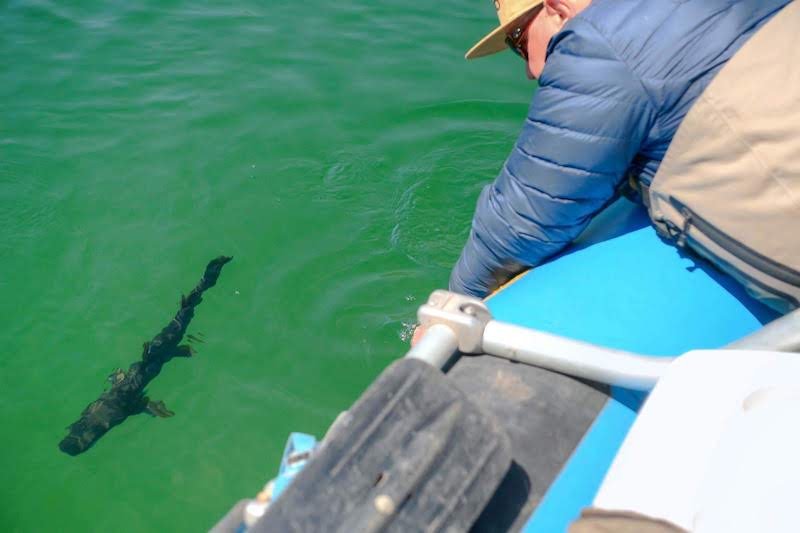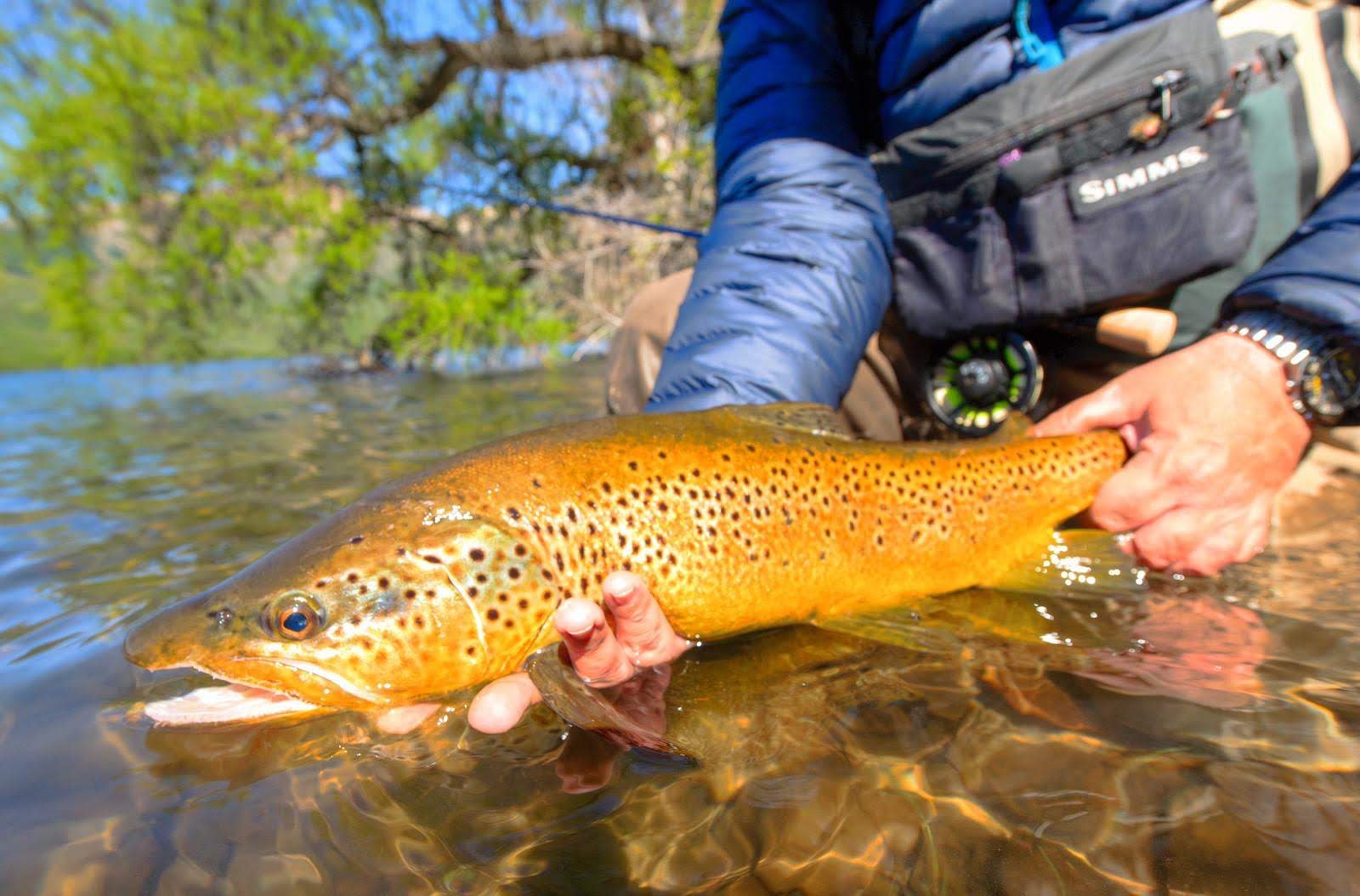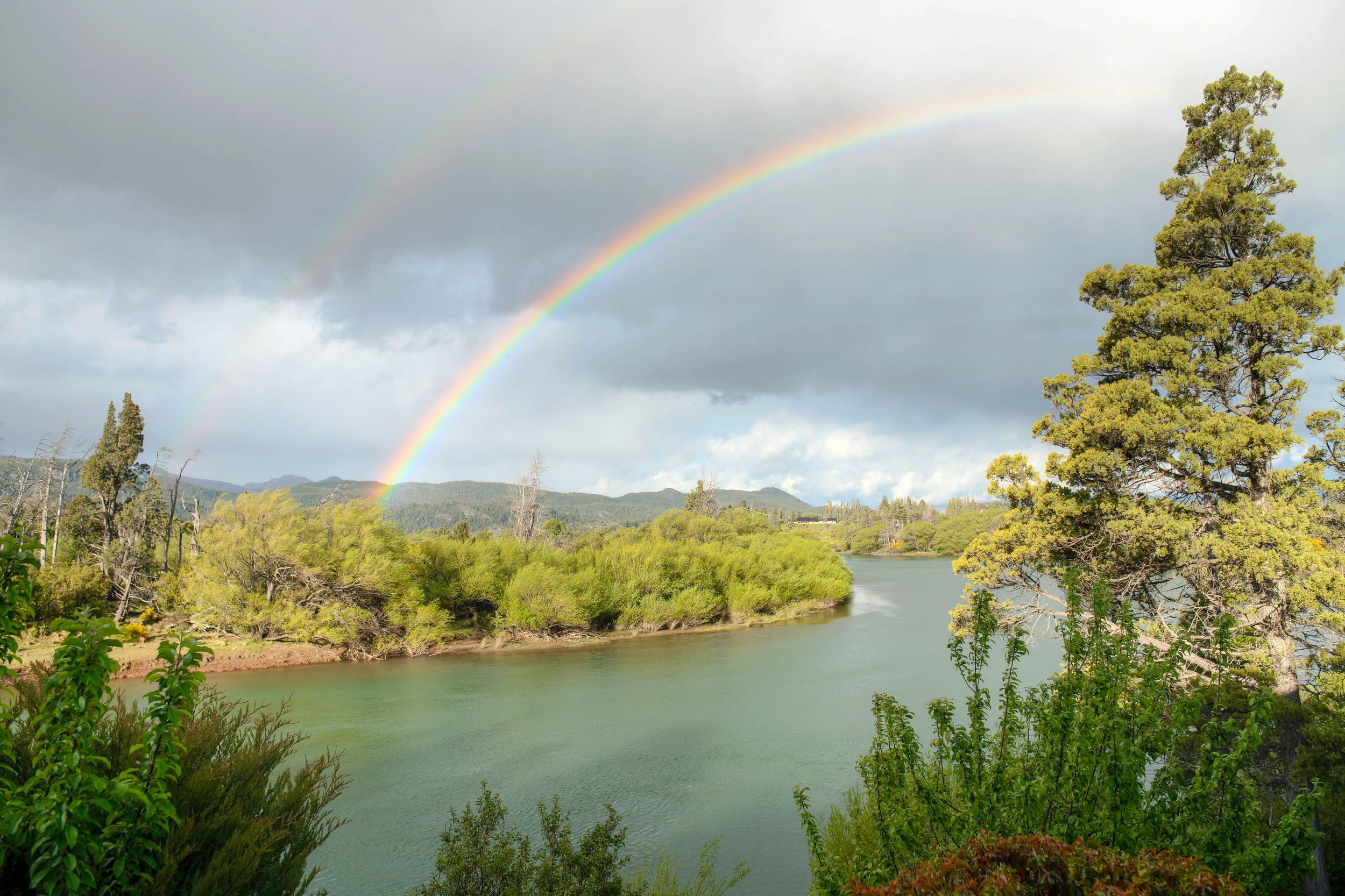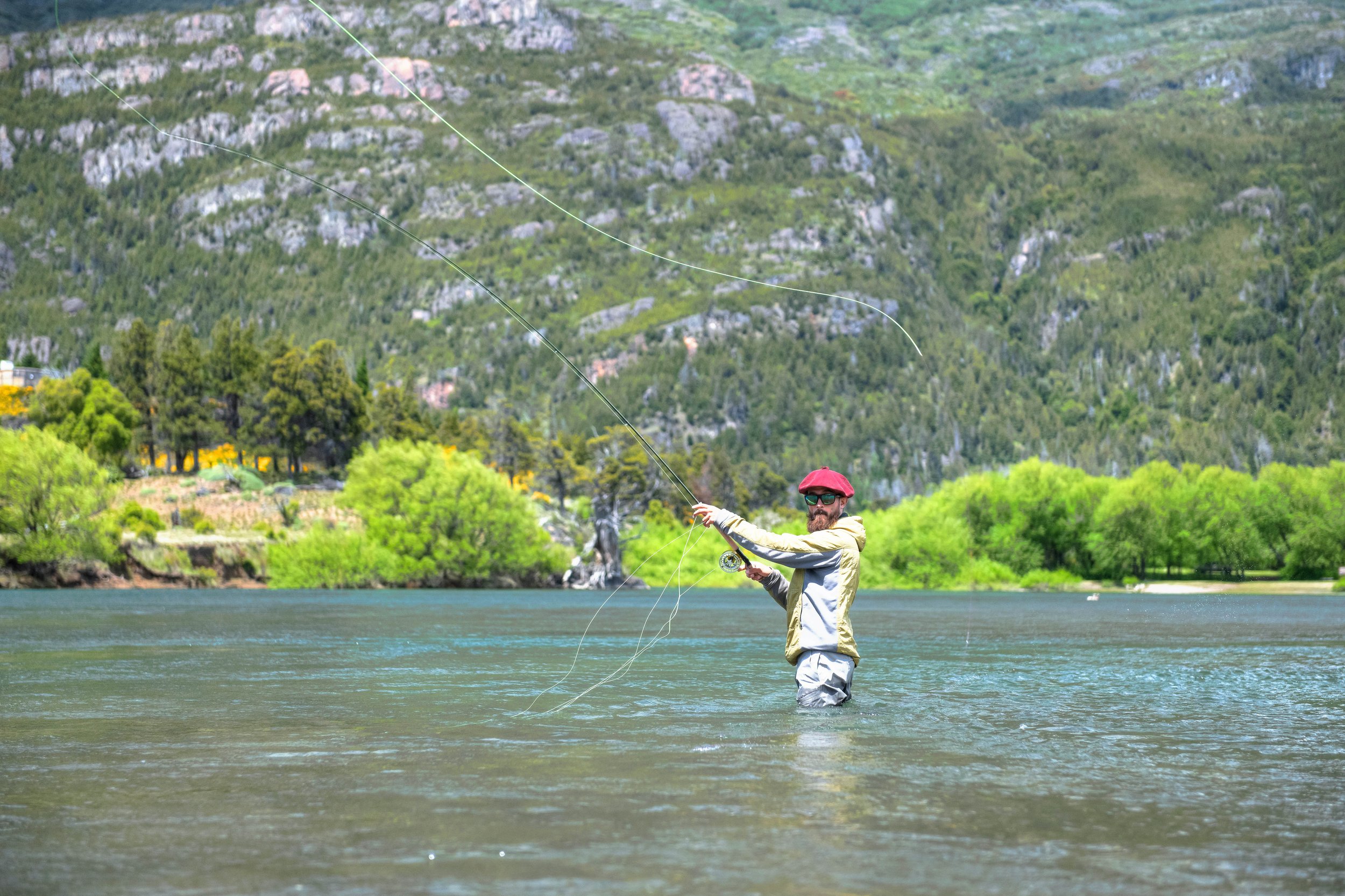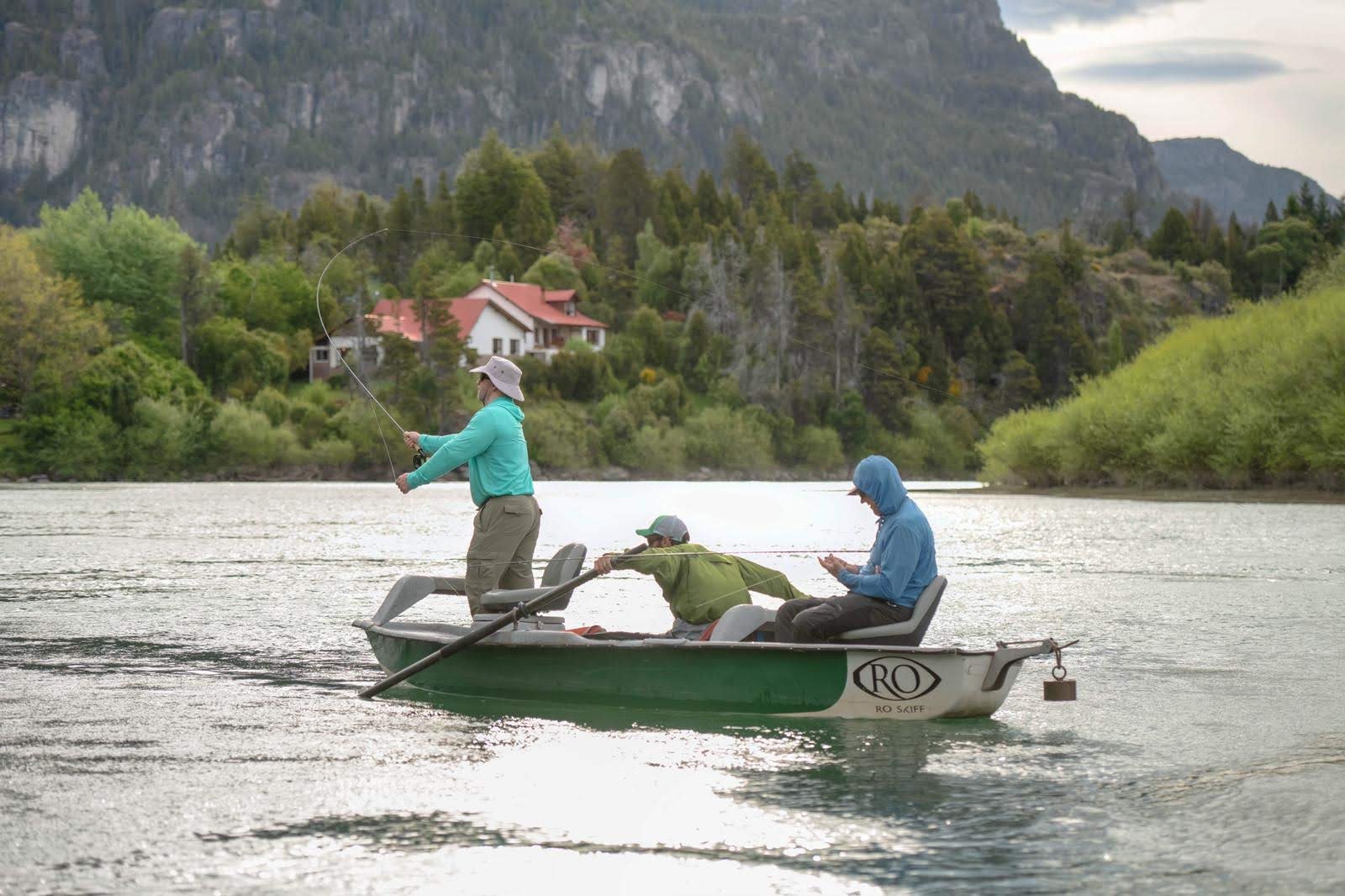Living on the River
One unique facet of the El Encuentro experience is our close proximity to the water. As I mentioned in my last post, the lodge sits atop a large stretch of back eddy, providing a spectacular view of the Futaleufú River. But it’s not just picturesque — more importantly, it gives us a 24/7 barometer of fishing conditions. There are a lot fewer mornings spent waking up early to check CFS flow data online, reading wind charts, or looking at forecasts. While these tools may still be useful in many cases, recently I’ve grown to prefer waking up and walking down to the river, and deciding then and there whether or not I’ll start with a big dry dropper setup, a streamer, or a caddis. It’s better to just feel and experience what you can take in with your eyes and ears.
The water level, brightness, wind, temperature — all these environmental conditions are things you come to feel and know intimately thanks to our privileged little spot on the banks of the Futa. When work conversations are punctuated by nearby splashes and rises on a hot afternoon, I know that I’ll be walking down to the bank with a big caddis later. When the river’s obviously down and there’s not a fish to be seen, I’ll be looking somewhere deep once I’m on the water. In short, being at El Encuentro means syncing up with the rhythms of the water in a way that I haven’t experienced before. It’s awesome.
Just the other day I was taking a little maté break on the front porch. From across the way I spotted a nice deep-cut bank under several overhanging willows on the opposite side of the river. Even from a distance, I could clearly see several large dark torpedoes darting in and out of cover: big trout eating actively. I may have spent a little too much time watching them feed and soaking in their habits. I wasn’t able to fish at that moment, and it was difficult being teased long-distance by the local residents. Nevertheless, I made a mental note of their location, hoping to use that information at a later date.
As it happens, I was lucky enough to find myself floating with El Encuentro guide Julian and fellow helper Alvaro the next morning. It was already sweltering by early afternoon, and the river was way up from a fresh release at the dam upstream. The sun was high and there wasn’t a cloud in the sky — it was almost a little too hot for a pale gringo. Those same feeders I had seen earlier were nowhere to be found, and it seemed the fish were not looking up anywhere —maybe they were down deep on the cool and protected river bottom. Despite the fact that I couldn’t find my friends from the other day, I still hit that same hole with a large, dark streamer. I let it swing out and sink down to the middle river and began to lazily strip it in with slow halting twitches. Halfway through my retrieve I was hooked into something heavy, and what I initially thought was certainly some unlucky driftwood down at the bottom turned out to be my personal best trout: an old predatory brown trout that was maybe half my age. I later recounted the story of El Encuentro's head guide Marcelo. Knowing much more about the behavior of the fish here than me, he was convinced that the large brown had followed my streamer from that little undercut bank to the middle river before striking during my retrieve.
That was just one example of how being so close to the river system helps to inform our fishing at El Encuentro. The different types holding water, hatches, and how they’re effected by the environment are always there in the corner of your eye. From day to day, these little bits of information build upon and add to our experiences — It’s both a passive and active thing, and you really come to know the river better just by being here. For instance, I’ve recently noticed that the local system’s fallen into a somewhat regular pattern: calm, clear mornings have been filled with nymphs, small dries, and spooky fish. Now that we’re heading deeper into the middle of summer, however, we’ve also been treated to short windows of hopper action in the afternoons. We’ve already started to see a handful of naturals along the banks and a noticeable uptick in violent rises visible from our little perch above the Futa. Flows have been high recently, with fish regularly holding under the willows and cut banks. Hopefully, as temps continue to rise these factors will all come together, those windows will get longer, and we can look forward to full days of throwing big foam-bodied flies.
That’s all for now as I prepare for my first four-day stint at the Brook Trout Base Camp assisting our guides. We leave for the camp tomorrow, and I’m looking forward to exploring the Corcovado region more thoroughly — I hope to come back with more to report on the amazing fishing experiences here in Central Patagonia. Stay tuned!
